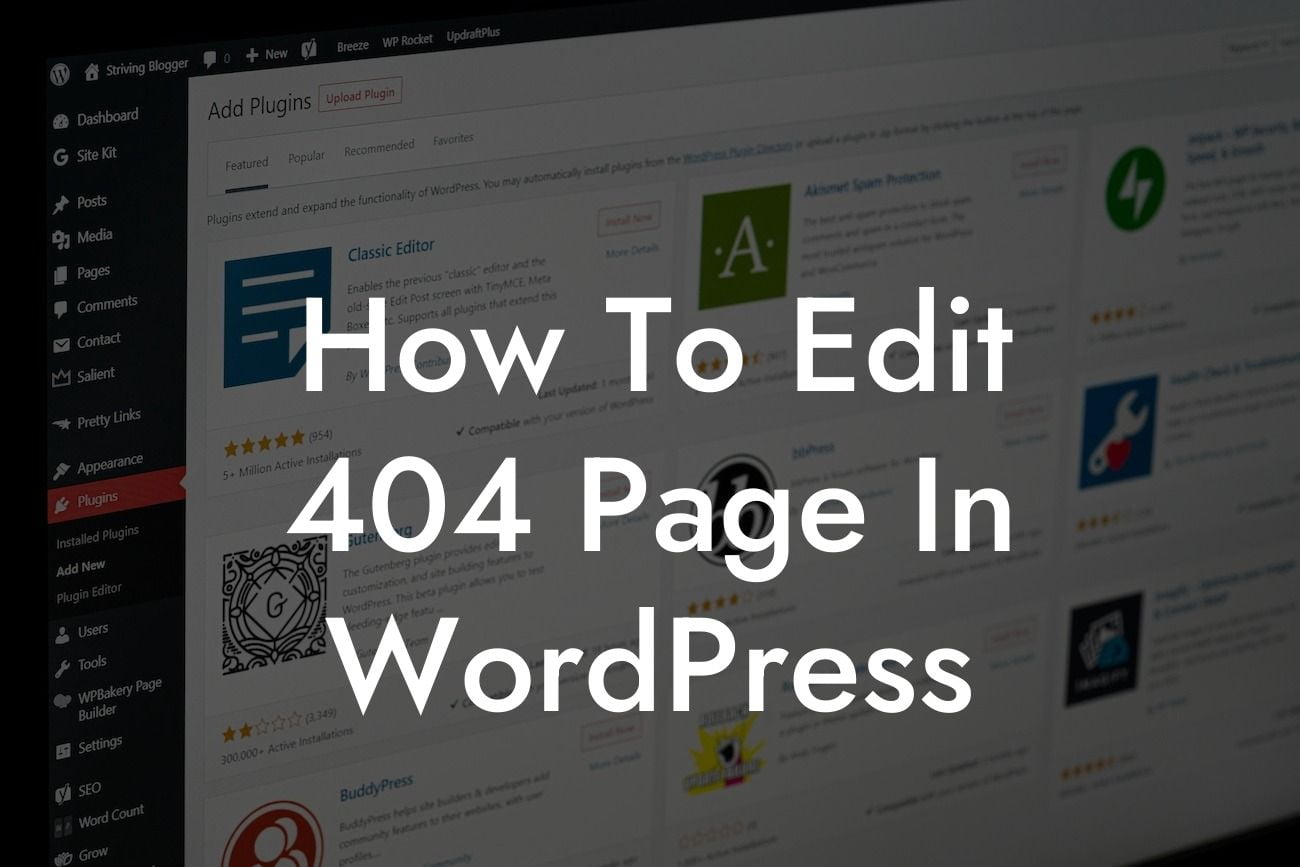Have you ever stumbled upon a dead-end page while browsing a website? You're not alone. These pages, known as 404 error pages, can be frustrating for users and might make them leave your website entirely. But fear not! In this comprehensive guide, we will show you how to effortlessly edit the 404 page in WordPress, turning it into an engaging and informative experience for your visitors.
404 pages provide an opportunity to captivate your users even when they land on a page that doesn't exist. Let's dive into the step-by-step process of editing your 404 page in WordPress and make it an asset rather than a liability for your website.
1. Choose a Custom Page Template: The first step is to create a custom template that will serve as your 404 page. Design it to match your website's branding and ensure it's visually appealing and easy to navigate.
2. Create Engaging Content: The key to an effective 404 page is to provide helpful information while entertaining your visitors. Use eye-catching headings and engaging language to explain why they ended up on the 404 page and provide suggestions to navigate back to relevant content.
3. Add Relevant Links: Include links to your popular pages, recent blog posts, or featured products on your 404 page. This helps users find what they were looking for, reducing frustration and encouraging them to explore further.
Looking For a Custom QuickBook Integration?
4. Use Visuals: Visual elements such as images, videos, or illustrations can make your 404 page more appealing. Consider using humor or creativity to bring a smile to your visitor's face and keep them engaged.
5. Implement a Search Bar: Including a search bar allows users to quickly search for what they were initially looking for. This makes it easier for them to find relevant content and navigate back to your website effortlessly.
How To Edit 404 Page In Wordpress Example:
For instance, let's say you run an online clothing store, and a user lands on a non-existent product page. Your 404 page could display a witty message like, "Oops! It seems this outfit escaped the racks. Don't worry, we've got plenty more trendy clothes awaiting you! Explore our latest collections below." Then, you can showcase popular categories or featured products to entice them to continue browsing.
Now that you've mastered the art of editing your 404 page in WordPress, it's time to put your knowledge into practice. Remember to keep your page engaging, informative, and visually appealing to leave a lasting impression on your visitors. Don't forget to explore other helpful guides on DamnWoo and discover our collection of awesome plugins that can supercharge your online success. Share this article with others who might find it valuable too!













